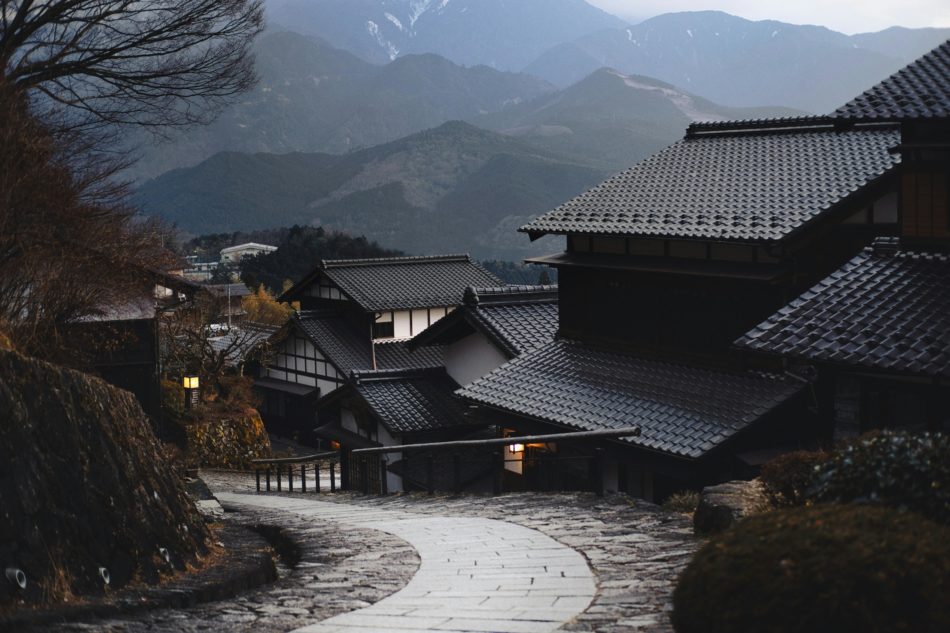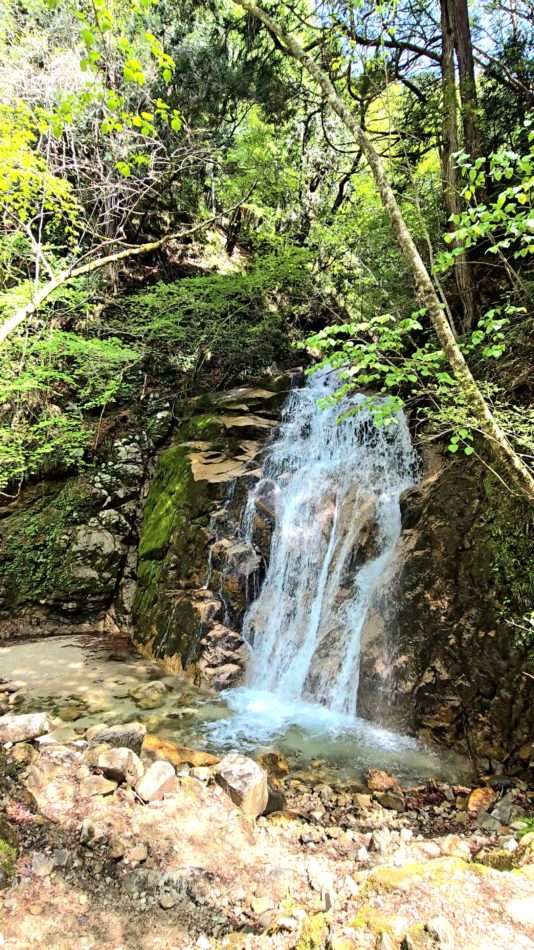At that point in my journey through Japan, I didn’t exactly know what I was looking for.
For a space without distractions, where time wouldn’t rush. And maybe, more than anything, I needed something that couldn’t be photographed.
Somewhere I had read that the Nakasendo Road was an ancient route connecting the old city of Tokyo (Edo) to Kyoto. A path once walked by samurai, pilgrims, merchants. But for me, it became something more: a journey toward essence.
Magome
Magome greets you like a whisper. The wooden houses, the cobbled streets, the water flowing gently beside the sidewalks, every detail seems to remind you that here, you walk slowly, and notice everything.
As soon as I arrived, I took a deep breath. Not so much for the crisp mountain air, but because, finally, nothing around me demanded to be rushed. I left my phone in my backpack. And I began to walk.
Magome is a popular destination for tourists, with many walking its streets at all hours.
Despite this, I can still feel the touch of magic that pervades everything in Magome.
I can sense time standing still, the clock hands frozen.
A slow flow of identical moments that find rhythm only in the silence.
The trail from Magome to Tsumago
The most famous section of the Nakasendo Road is about eight kilometers long. It might not seem like much, but every step here feels twice as heavy. Not from effort, but from depth. You pass through dense forests, alongside old post stations, past forgotten little shrines. And meanwhile, something inside you begins to loosen, like a rope you didn’t know was tight.
I didn’t speak to anyone for almost two hours. Not by choice, but because there was no need. The path spoke for itself: in the rustle of trees, the songs of birds, the crisp sound of my footsteps on the damp ground.
Tsumago
Tsumago is a village that welcomes you on tiptoe, as if not to interrupt your pace. Its streets seem to tell stories in hushed tones—through aged wood and lanterns that sway gently in the quiet. No out-of-place noises, only time that has chosen to stand still.
Walking among its houses feels like stepping into a breathing photograph: old hand-painted signs, silent shops, familiar aromas of tea and miso in the air. There’s nothing spectacular, and yet everything here is a spectacle. Because every detail is authentic.
I paused to watch the sky reflected in a puddle and listened to the sound of my own breath between the low rooftops. And I thought: if there truly is a place where the journey becomes an experience and not just a movement, it’s this one.
Encounters beyond words
Along the way, I met an old man with an impromptu stand. He was serving hot tea to travelers. No prices. Just a cup, a kind gesture, and a smile. I drank slowly. Then we bowed to each other, without saying a word. That bow carried the weight of centuries, a gesture that now belongs to the cultural heritage of Japan.
I believe the Nakasendo Road teaches you just that: that the most precious experience isn’t what you see, but what you feel. And that often, the most authentic Japan isn’t just in crowded temples or noisy markets, but especially in a small gesture in the woods.
Nakasendo Trail is not a destination, but a way of being
When I left Tsumago, I didn’t feel like I had “visited” something. Rather, I felt like I had been part, just for a moment, of something that existed before me and will continue to exist after me. And in that interval, I felt different. Lighter. More present.
The Nakasendo Road isn’t a place to check off your list, but a time to inhabit. A time where you walk slowly, listen, and let go.
The Japan that watched me
Walking the Nakasendo, I realized it wasn’t me observing Japan, but Japan observing me. And asking: are you ready to slow down?
Today, when I think back on that journey, I don’t so much remember the kilometers as the silences. And within those silences, I felt something move.
Maybe it was me—changing, without even realizing it.
Useful Information
Magome – Tsumago trail duration: 2–3 hours of easy walking.
Best seasons to visit: Spring (for cherry blossoms) or autumn (for colorful foliage).
Where to stay: In traditional inns (ryokan).
Accommodation in Magome and Tsumago can be quite expensive, but there are more affordable options in the surrounding areas.
How to get there: Take a train to Nakatsugawa (from Nagoya), then a bus to Magome or Tsumago.
Alternatively, you can rent a car and park in one of the many paid or free parking lots in Magome or Tsumago











Leave a Reply